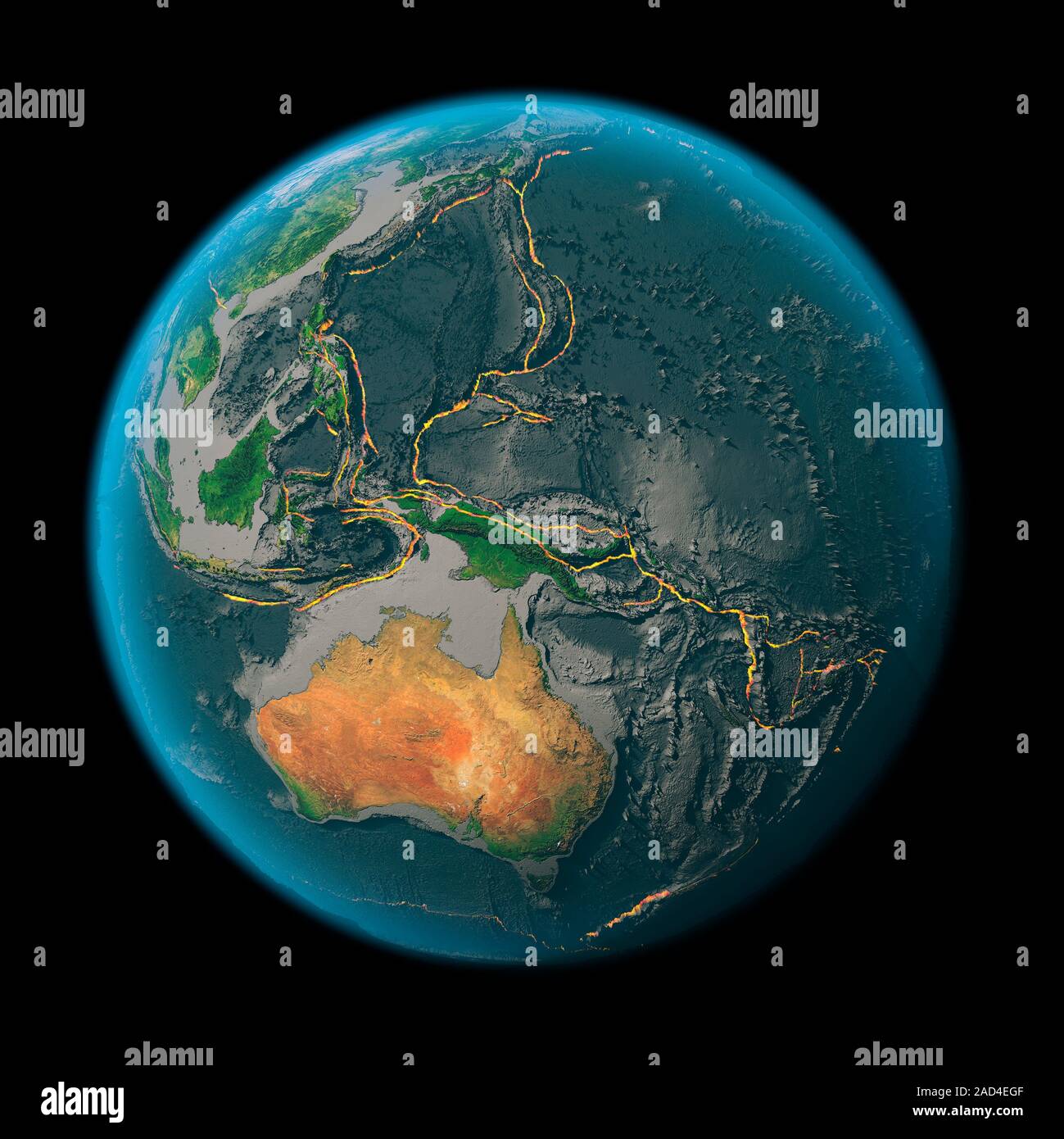Imagine a vast, shimmering expanse of blue stretching as far as the eye can see, a realm of power and endless movement. This is the Pacific Ocean, the largest body of water on Earth, a dynamic system that shapes and influences our planet in profound ways. The Pacific Ocean isn’t just a beautiful backdrop for sunsets and seaside vacations; it’s a colossal, interconnected engine driving weather patterns, influencing climate, and supporting life on a global scale.
Image: apps.earthsystems.com
The Pacific Ocean, a true geological giant, holds within its depths the key to understanding Earth’s intricate systems. This article will journey into the heart of this dynamic ocean, exploring its intricate web of interactions with the atmosphere, landmasses, and even the very fabric of our planet. We’ll delve into the awe-inspiring forces at play within its depths, from the powerful El Niño-Southern Oscillation to the delicate balance of marine ecosystems, revealing the profound impact this majestic ocean has on our lives.
A World Beneath the Waves: The Pacific Ocean’s Earth Systems
The Pacific Ocean is not just a vast body of water; it’s a complex network of interconnected systems that drive global climate patterns, generate rich biodiversity, and influence the Earth’s geology. Let’s explore these key Earth systems intertwined with the Pacific:
1. Ocean Currents: A Global Conveyor Belt
Imagine a colossal conveyor belt, driven by wind and temperature differences, transporting vast amounts of water across the globe. This is what the Pacific Ocean’s currents are like, playing a critical role in regulating global climate.
-
The Pacific’s “Global Conveyor Belt”: The Pacific Ocean houses powerful currents like the Kuroshio Current, the California Current, and the South Equatorial Current. These currents carry warm water from the tropics towards the poles and cold water from the poles towards the equator, acting as a massive heat distribution network.
-
Climate Regulation: The Pacific’s currents significantly impact regional climates. For example, the warm Kuroshio Current moderates Japan’s winters, while the cold California Current cools the coastal regions of North America.
-
Nutrient Transport: Ocean currents also act as vital nutrient transporters. They carry nutrients from the deep ocean up to the surface, supporting vibrant marine ecosystems.
2. The El Niño-Southern Oscillation: A Rhythmic Dance of Climate
The Pacific Ocean’s heartbeat, the El Niño-Southern Oscillation (ENSO), manifests as a periodic shift in atmospheric and oceanic pressure systems. This fluctuation has a profound impact on global weather patterns.
-
The Swing of the Pendulum: During El Niño, warmer-than-average water gathers in the central and eastern Pacific, leading to changes in wind patterns and rainfall distribution across the globe. La Niña is the opposite – colder-than-average water dominates the eastern Pacific, causing contrasting weather anomalies.
-
Global Repercussions: ENSO influences everything from droughts and floods to the severity of hurricane seasons. Understanding this cycle is crucial for disaster preparedness and climate forecasting.
-
Human Impacts: Human activities, such as deforestation and greenhouse gas emissions, may be exacerbating the intensity and frequency of El Niño and La Niña events.

Image: www.alamy.com
3. Marine Ecosystems: Life in Balance
The Pacific Ocean is home to a vast array of marine life – from microscopic plankton to majestic whales. These ecosystems are interconnected and depend on a delicate balance of factors.
-
The Food Web: Marine ecosystems rely on a complex food web, with each species playing a crucial role. Phytoplankton, the base of the food chain, thrives in sunlit surface waters and is devoured by zooplankton, which, in turn, are eaten by larger fish and marine animals.
-
Coral Reefs: Underwater Cities: Coral reefs, thriving in the Pacific’s tropical waters, serve as vibrant underwater cities, supporting countless species and providing critical habitat for fish and invertebrates.
-
Threats to Biodiversity: Overfishing, pollution, and climate change pose serious threats to marine ecosystems, disrupting the delicate balance of life and endangering species.
4. Pacific Ring of Fire: A Fiery Boundary
A large part of the Pacific Ocean’s shoreline is marked by the Pacific Ring of Fire, a zone of intense volcanic and seismic activity where tectonic plates collide.
-
Plate Tectonics in Action: The Pacific Plate, one of the largest tectonic plates, constantly interacts with surrounding plates. This interaction creates a chain of volcanoes and fault lines that ring the Pacific Ocean basin.
-
Earthquakes and Volcanic Eruptions: The Ring of Fire is responsible for the majority of Earth’s earthquakes and volcanic eruptions. It’s a powerful reminder of the dynamic nature of our planet’s geology.
-
Impact on Coastal Communities: Volcanic eruptions and earthquakes, while part of the natural cycle, can have devastating impacts on coastal communities. Understanding the geological forces at play is crucial for disaster mitigation.
Expert Perspectives and Practical Insights
“We must recognize that the Pacific Ocean is not just a vast body of water. It’s a living, breathing system, interconnected with all other systems on Earth. Understanding this interconnectivity is crucial to tackling the complex environmental challenges we face today,” explains Dr. Sarah Jones, a leading marine biologist and oceanographer.
Dr. Jones emphasizes the need for responsible ocean management, urging individuals to minimize their environmental impact by reducing plastic use and supporting sustainable fishing practices.
Earth Systems Pacific
The Pacific: A Powerful Reminder of Our Interconnectedness
The Pacific Ocean, a colossal force of nature, teaches us about the interconnectedness of our Earth’s systems. Its currents regulate our climate, its ecosystems support life, and its geological activity shapes our planet. We must recognize the significant impact the Pacific has on our lives and work to protect this precious resource for future generations.






